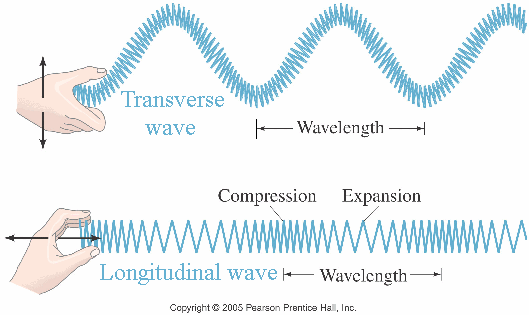The Science of Sound
Why do we find the sounds of nature relaxing? Could it be that we carry the memory of things that are beneficial to us in our DNA? Hard to say but the science of sound might hold some clues.
Almost 99% of the mass of the human body is made up of six elements: oxygen, carbon, hydrogen, nitrogen, calcium and phosphorus. The human body is made of at least 60% water (H2O) and most of the water is in our cells. So what does this have to do to with sound one might think? To answer that, we’ll have to understand more about the science behind sound.
What is sound?
Sound is the sensation perceived by the sense of hearing. Or in more scientific words, sound is mechanical radiant energy that is transmitted by longitudinal pressure waves in a material medium (as air) and is the objective cause of hearing.
Ear anatomy: The outer ear, the middle ear, and the inner ear.
The Outer Ear
When we speak, sound waves move through air (medium) towards the outer ear. The outer ear with its bowl-like shape is known as The Pinna and helps to enhance sound coming from the front of the listener. The outer ear’s function is to collect sound and channel it into the External Auditory Canal, better known as the ear canal. It also assists in enhancing certain frequencies that are important for speech understanding, known as Ear Canal Resonance. Sound waves enter the ear canal and push, vibrate or move the eardrum.
The Middle Ear
Movement on the eardrum causes the ossicles, three tiny bones that are attached to the eardrum (Malleus, Incus, Stapes) to move as well. The role of the ossicles is to help channel sound from air-filled middle ear space to the fluid-filled chamber of the inner ear. The ossicles move back and forth in response to sound pressure on the eardrum; the Stapes exert force on the Oval Window, which leads to the inner ear. By the way, did you know that the ossicles are also the tiniest bones in your body? They can fit on one eurocent! That’s 17mm!
The Inner Ear
The inner ear anatomy is comprised of two chambers, a balance chamber (Vestibular System) and a hearing chamber (Cochlea). Inside the cochlea the sound waves are converted to neural signals by the “hair cells”. Once the cochlea receives the sound information, the sounds are divided by frequency and transferred by the auditory nerve to the portion of the brain responsible for hearing and understanding, known as the Auditory Cortex
Depending on the Hz of the sound, it will communicate with the apex or base of the cochlea.
The Auditory Pathways
The auditory system pathways travelling from the cochlea to the auditory cortex continuously work together to determine the signal from the noise. Different levels of the auditory pathways are responsible for different aspects of “cleaning up” the signal. The Superior Olivary Complex is the place in the auditory pathways where information between the two ears is combined. As information from each ear is received, there is typically a slight difference in sound intensity due to the time it takes for the information to arrive at the right ear versus the left ear. This is called the Head-Shadow Effect.
The auditory system is amazing and recognizes the tiniest of differences. It either enhances useful information (the signal) or reduces what is distracting information (the noise). This is called Binaural Summation and Binaural Subtraction. Advanced auditory processing skills such as these rely heavily on both ears to deliver a full picture of the auditory surroundings from outside of the ear to the cochlea, to the auditory pathways and then to the auditory cortex.
Now we know how the ear processes sound, but what is sound made of?
What is sound made of?
Light waves are made of photons and electric waves are made of electrons but sound waves… sound waves are nothing but vibrations carried by particles!
The sound wave produces changes in pressure in the air (or medium). Let me explain this a bit further: when something produces a sound, the sound wave created vibrates the air molecules, and these vibrations travels through the air until it reaches our ear drums and ultimately the Auditory Cortex.
Sound always needs a medium or material to travel through. Do you know that you can’t hear someone speak in space? This is because space has no air molecules, so sound waves don’t have a medium to vibrate! There are two main types of waves: transverse and longitudinal. Light waves and water ripples are transverse, but sound waves are longitudinal.
Transverse & longitudinal waves
What is a Sound Wave?
A sound wave consists of a wavelength, a frequency, amplitude and pitch.
A wavelength is the distance of two identical parts, from compression to compression or rarefaction to rarefaction. The length of one full wave is measured in meters. A sounds waves frequency (Hz) is a number that tells you how many waves pass by each second. One Hertz (Hz) is one oscillation per second, just to get an idea of the vibration in your ear. A higher frequency means a shorter wavelength and a lower frequency means a longer wavelength. Amplitude is the volume of sound and Pitch is the degree of highness or lowness of a tone.
A sound wave
The speed of sound
Sound travels through air, but also through other gases, liquids and solid substances. The speed of sound depends on how quickly the particles of the medium can pass through the sound wave. Temperature and elasticity play an important role. In elastic materials, particles are relatively close to each other and respond quickly on a sound wave. Solid substances are usually more elastic than liquid or gases. For instance the speed of sound through air (gas) at 20ºC is around 340 meters per second (m/s). Through water (liquid) it’s 1,484 m/s, and when sound travels through iron (solid) it goes 15 times faster, about 5000 m/s. In super stiff material such as diamond, sound even travels at 12.000 m/s, that’s 12 km per second!
Cymatics of a singing bowl with water.
Cymatics
So now we know what sound is, how we process it, what it’s made of and how it travels. So what about those cells that contain water in our body? How do they respond to the vibrations of sound? We know that sound travels at a certain speed through air, but it travels at another speed through the body, so shouldn’t your brain ‘hear’ it twice? How do these vibrations work? For that the science of cymatics might give us more insight. Cymatics is a process that makes sound visible via for example water or cornstarch. Experiments conclude that sound frequencies are not in a state of chaos but are a highly structured and organized schema. As the frequency increases, the designs become more and more complex. Isn’t sound amazing?
Resonance & The Human Body
When you shake an object, its response will depend very strongly on the frequency (Hz) you apply. At certain frequencies, there is a very strong response and those are called resonancies. The lowest possible natural resonance frequency is known as the first harmonic, the following harmonics are known as higher harmonics.
First harmonic, second harmonic and the third harmonic
The human body has a range of resonance frequencies at various body sections. It is said that certain frequencies are of influence on our physical wellbeing. Why is that? Why is it that the sound of nature makes us feel relaxed? Is our genetic memory of influence? Do we instinctively know what is right for us? Is the way that the brain separates noise from a signal also being done instinctively?
Human Body Resonance Frequencies
Sound & Memory
The temporal lobe of our brain is involved in hearing, memory, language, comprehension and emotion. Studies have shown that people with severe dementia, can tap into old memories as if it was yesterday, just by hearing a song they recognize. They can even sing along with the lyrics! So the question arises, what does sound have to do with memory? Is it possible that we carry memory in our DNA from our ancestors and we still access some of this information today?
The answer is debatable, but we all experience instinct as a form of memory past on from our ancestors. Same with our fight or flight mode, that got passed on from our ancestors in case we needed to run if we’d bumped into a tiger. Maybe these sounds of nature remind us of memories that are good for our wellbeing? Maybe our body knows what is good for us and what is not? I believe that how we perceive sound is a personal experience, and when you dive into the world of sound there is no easy answer. We humans might have a little compass within that resonates with everything, from sounds, humans and objects telling us whether something is beneficial for our system or not.
Conscious Contributor: Elizabeth Plokker
Published in: O-Wonder!










